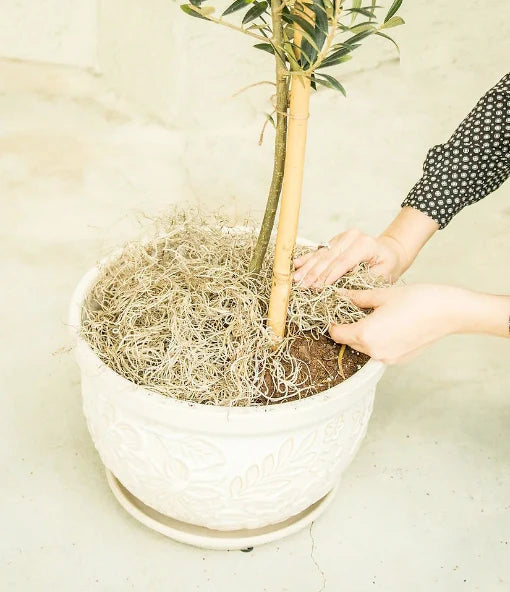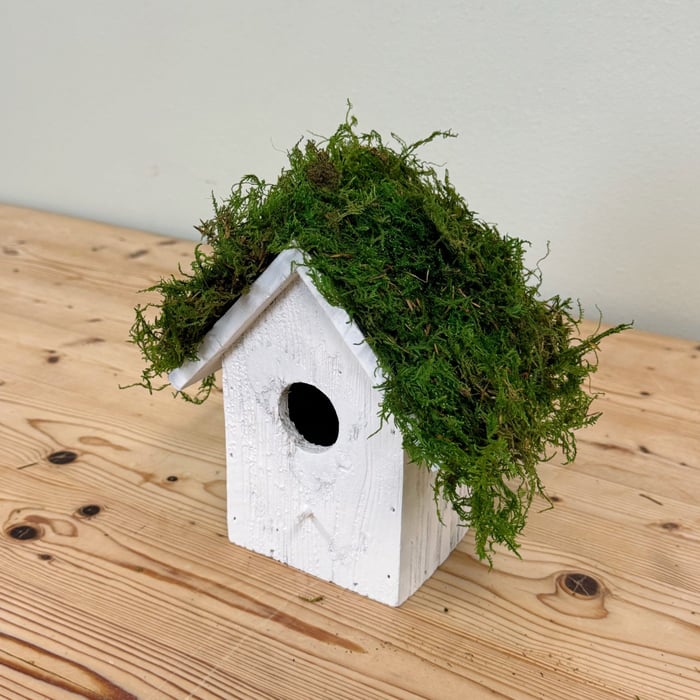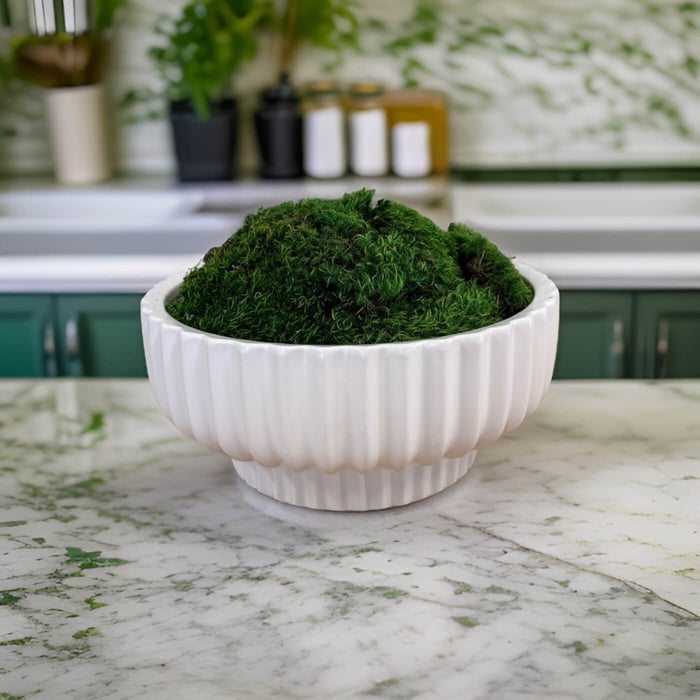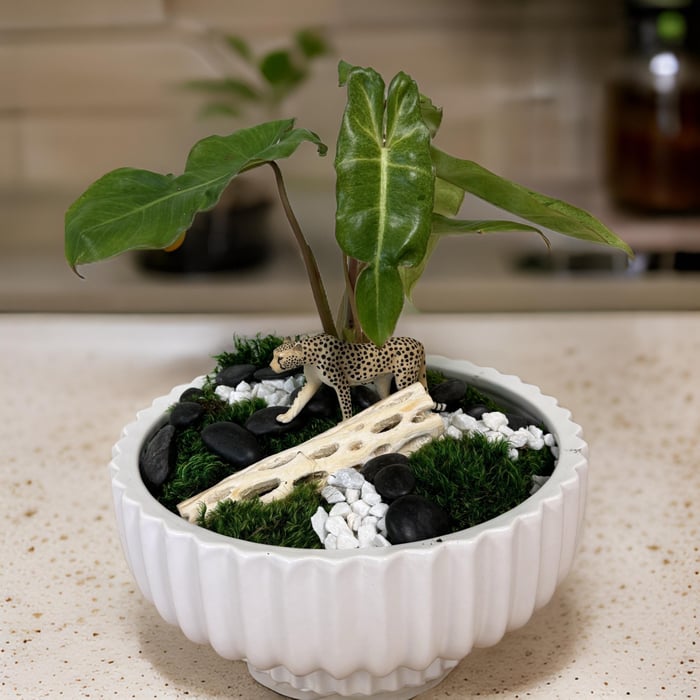Orchids are renowned for their delicate beauty and unique charm, making them a popular choice for indoor gardening enthusiasts. One creative and visually appealing way to showcase these elegant flowers is by crafting an orchid terrarium. In this blog, we'll guide you through the step-by-step process of creating a stunning orchid terrarium using moss and other complementary products.
Materials Needed:
- Glass Terrarium Container
- Orchids/Plants (variety of your choice)
- Reindeer Moss, Mood Moss, Black Lichen (we used our Variety Pack Moss)
- Sponge Rock (for the base)
- Soil
- Decorative Stones or Pebbles (we used shells)
- Activated Charcoal
- Wood Slab
Step 1: Choose the Right Container Select a glass terrarium container that suits the size and aesthetic you desire. Ensure that it has proper ventilation and enough space for the orchids to grow. The transparency of the glass will allow you to appreciate the beauty of your orchids from all angles.
Step 2: Prepare the Base Layer Create a drainage layer at the bottom of the terrarium using sponge rock. This layer helps prevent waterlogging and keeps the orchid roots healthy. Next add a layer of soil.
Step 3: Gently remove the orchids and plants from their nursery pots and place them in the terrarium, leaving enough space between them for growth. In our video we mounted an orchid on a wood slab since they tend to grow better and faster this way. Adjust the depth so that the roots are covered with the soil but not buried too deep. Add activated charcoal over the soil.
Step 4: Incorporate mood and reindeer moss around the base of each orchid to create a visually appealing and natural look. The moss not only adds aesthetic value but also helps in retaining moisture, creating a suitable environment for orchid growth. For additional aesthetic appeal add Black Lichen to the wood slab and add a touch of shells or decorative pebbles.
Step 5: Water the orchids sparingly, ensuring that the roots don't stay constantly wet. A spray bottle can be useful for misting the moss and maintaining humidity.
Step 6: Placement and Light Choose an appropriate location for your orchid terrarium based on the light requirements of your orchids. Most orchids thrive in bright, indirect light. Avoid placing the terrarium in direct sunlight, as it may lead to excessive heat and damage the delicate orchid blooms.
Click here to watch our DIY Orchid Terrarium.
Here are some tips for caring for an orchid in a terrarium with moss:
- Lighting: Orchids generally need bright, indirect light. Ensure that the terrarium receives filtered or dappled sunlight, as direct sunlight can be too intense. If natural light is insufficient, you can supplement it with artificial grow lights.
- Humidity: Orchids usually prefer high humidity. Moss in the terrarium can contribute to maintaining a humid environment. However, ensure proper ventilation to prevent stagnant air and fungal issues. Mist the orchid occasionally if needed.
- Watering: Orchids typically don't like to sit in waterlogged conditions. Moss retains moisture well, so be cautious not to overwater. Allow the top layer of moss to dry slightly between waterings. Use a well-draining orchid mix and adjust watering frequency based on the specific needs of your orchid.
- Temperature: Most orchids prefer temperatures between 60°F to 80°F (15°C to 27°C). Ensure that the terrarium maintains a suitable temperature range. Avoid sudden temperature fluctuations.
- Fertilization: Orchids benefit from regular fertilization, especially during the growing season. Use a balanced orchid fertilizer, and follow the recommended dilution and frequency on the product label.
- Air Circulation: Good air circulation is essential to prevent the development of mold and ensure oxygen exchange. Open the terrarium occasionally to allow fresh air to circulate.
- Pruning: Remove any dead or yellowing leaves to promote healthy growth. Prune spent flowers to encourage the orchid to produce new blooms.
- Choosing Orchid Species: Different orchid species have varying care requirements. Ensure you are aware of the specific needs of the orchid species you have in the terrarium.
Monitor your orchid regularly and adjust care practices based on its specific needs and the conditions within the terrarium. If you provide the orchid with the right environment, it should thrive and reward you with beautiful blooms.
Conclusion: Creating an orchid terrarium using moss and other complementary products is a delightful way to showcase these exquisite flowers. By carefully selecting the right materials and following the steps outlined above, you can enjoy a beautiful and thriving orchid display right in the comfort of your home. Experiment with different orchid varieties and moss arrangements to personalize your terrarium and create a captivating indoor garden. Happy terrarium crafting!
 Reindeer Moss
Reindeer Moss
 Mood Moss
Mood Moss
 Spanish Moss
Spanish Moss
 Variety Packs
Variety Packs
 Mossy Mat
Mossy Mat
 Sheet Moss
Sheet Moss



